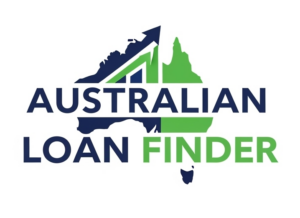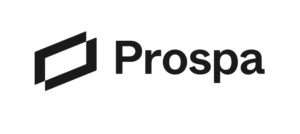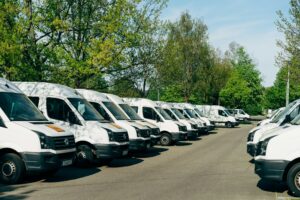Disclosure: This post contains sponsored links whereby we may receive a commission for any purchases made. The following is general information only and should not be considered financial advice.
Acquiring the right vehicles and equipment is critical for Australian businesses, whether it’s a fleet of utes for a construction firm, delivery vans for logistics, or specialized equipment for trades. But purchasing outright can strain working capital, especially for growing operations. That’s where business vehicle equipment finance comes in, offering a range of solutions designed to preserve cash flow, unlock tax advantages, and match financing to business needs.
From chattel mortgages that grant immediate ownership to operating leases that keep assets off the balance sheet, Australian businesses have access to diverse financing structures, each with distinct implications for ownership, taxation, and financial management. Understanding these options is key to making smart, strategic decisions that align with operational goals and financial health.
This guide breaks down eight core financing solutions available in Australia, exploring how each works, who they’re best suited for, and what benefits they deliver. Whether seeking outright ownership, flexible lease arrangements, or employee salary packaging perks, there’s a financing path tailored to fit.
Top Platforms for Australians Seeking Business & Vehicle Equipment Financing For November 2025
1) Australian Loan Finder

Australian Loan Finder is an Australian-owned business finance provider helping local small businesses access fast, flexible, and transparent funding through partnerships with reputable Australian lenders. Unlike traditional banks or generic loan marketplaces, Australian Loan Finder offers a direct, streamlined approach to business finance—acting as your dedicated finance partner from application to funding. Businesses can apply online in just 2 minutes, with loans available from $5,000 to $500,000, and receive personalised funding options designed around their needs. For eligible borrowers, no upfront security is required on loans under $150,000, and decisions can be made within hours—with funds often available in as little as 24 to 72 hours.
With fixed, transparent pricing, loan terms between 3 months and 5 years, and flexible repayment schedules that align with your cash flow, Australian Loan Finder gives business owners the clarity and control they need to grow confidently. Whether you’re managing day-to-day operations or investing in expansion, Australian Loan Finder simplifies access to funding—so you can focus on what matters most: running your business.
2) Lumi

Introduction to Lumi
Lumi stands at the forefront of small business financing solutions in Australia, offering a robust platform that prioritizes flexibility and transparency.
With a commitment to empowering businesses, Lumi provides unsecured loans ranging from anywhere from $5,000 to $300,000, helping to simplify the lending process for entrepreneurs.
Lumi Business Loan Application Process
- Quick:Simple online application process to submit your information and the type of loan your after to get started
- Simple: Simply gather your ABN/ACN, driver’s license, and bank details and find out pretty quick if your approved
- Fast: Approval can come as fast as 2 hours, and funding can hit your account within the same business day
Features of Lumi Business Loans
- Loan Amount Flexibility: Borrowers can access loans ranging from $5,000 to $300,000, accommodating diverse business needs
- Speedy Application and Approval: Lumi’s emphasis on quick processing allows applicants to receive funds within the same business day, facilitating timely responses to business opportunities
- Transparent Fee Structure: Lumi sets itself apart with minimal fees, notably a 2.5% establishment fee, providing clarity and predictability for borrowers
- Unsecured Loans: With a focus on inclusivity, Lumi offers unsecured business loans, eliminating the need for collateral for amounts up to $300,000
- Flexible Repayment Options: Weekly repayment frequencies, principal and interest repayment types, and the option for extra repayments contribute to a borrower-friendly repayment structure
- Early Repayment Benefits: Lumi distinguishes itself by allowing borrowers to pay off their loans early without incurring penalties. Early payout options and discounts are available, with principal-only payouts accessible after 6 months
- Eligibility Criteria: Lumi caters to businesses that are at least six months old, with a minimum annual turnover of $50,000, establishing accessibility for a broad range of enterprises

3) Prospa

Overview of Prospa
Navigating the landscape of small business loans in Australia? Prospa is another solid contender in the market across both Australia and New Zealand. Prospa provides small business owners with a quick and simple way to obtain financing, and it has already assisted thousands of Australian small enterprises. Prospa received the Deloitte Tech Fast 50 in 2015, after increasing by 6071% in three years, making it Australia’s fastest growing technology firm and Asia’s third quickest. Prospa was a Telstra Business Awards finalist in 2015 and ranked 33rd globally as a leading innovator in KPMG’s Fintech 100.
How Prospa Small Business Loans Work
Prospa offers loans from $5,000 up to $500,000 for cash flow or growth. You can apply online in about 10 minutes and often get a decision the same day (with funds possible in 24 hours).
No upfront security is needed for loans under $150,000. Loan interest rates vary based on your business and are calculated upfront. This helps you to know the total cost before you borrow. Early repayment options are available to save on interest.
Benefits of Prospa Business Loan
Choosing Prospa for your business financing needs means opting for a partner who understands the nuances of small Australian businesses.
Simple Application Steps: Prospa ensures a straightforward application process that respects your time and urgency. With an online form that takes around 10 minutes, you’re on your way to financial support without unnecessary delays.
Flexible Loan Uses: Prospa allows you to utilize the loan for various business objectives, from buying supplies to expanding your team or renovating your workspace. Your business, your choices.
Variable Loan Durations: With loan periods ranging from 3 months to 3 years, Prospa caters to different business needs. Whether you want a short-term loan (boost) or a more extended financial support plan, Prospa offers flexibility.
Modular Payment Schedules: Prospa understands that one repayment schedule doesn’t fit all. You have the freedom to schedule repayments based on your business’s cash flow, choosing between weekly and daily payments.
Quick Approval and Funding: Prospa lives up to its promise of being swift. A 10-minute online application, coupled with approval possible within the hour depending on your scenario ensures you don’t miss out on capital.
Prospa’s business loans offer numerous advantages:
- Streamlined application: The online form takes only 10 minutes to complete, respecting your time and urgency.
- Versatile loan purposes: Use funds for various business objectives, including purchasing supplies, expanding your team, or renovating your workspace.
- Flexible loan terms: Choose from loan periods ranging from 3 months to 3 years, tailored to your specific business needs.
- Customisable repayment options: Schedule repayments based on your business’s cash flow, with weekly and daily payment options available.
- Rapid approval process: Depending on your situation, approval is possible within an hour of application submission.
1. Chattel Mortgage: Ownership from Day One

A chattel mortgage is one of the most popular vehicle finance options for Australian businesses, and for good reason. With this structure, the business owns the vehicle from the moment the loan is drawn down. The lender holds a ‘mortgage’ over the asset as security, but legal ownership sits with the borrower, not the financier.
This immediate ownership opens doors to significant tax planning opportunities and financial control. Businesses can depreciate the asset, claim GST credits, and deduct interest expenses, all while building equity in the vehicle from day one. It’s a straightforward, asset-backed loan that appeals to businesses seeking control and clarity.
This is one of the most common types of business loans in Australia especially for businesses needing vehicles for their teams such as electricians, construction companies and more.
Tax Benefits and Depreciation Claims
One of the standout features of a chattel mortgage is the upfront GST claim. If the business is registered for GST, it can claim the GST on the purchase price in the next Business Activity Statement (BAS). This immediate cash flow boost can be substantial, particularly for high-value vehicles or equipment.
Beyond GST, ongoing tax deductions make chattel mortgages even more attractive:
- Interest payments are tax-deductible as a business expense.
- Depreciation of the vehicle can be claimed over its effective life, reducing taxable income each year.
- Businesses may also deduct running costs like insurance, fuel, and maintenance if the vehicle is used for business purposes.
These deductions can significantly lower the effective cost of financing, especially for businesses with strong cash flow and taxable income to offset.
Who Should Consider This Option
Chattel mortgages are best suited for:
- GST-registered businesses looking to maximize upfront tax advantages.
- Companies seeking ownership and intending to keep the vehicle long-term.
- Businesses with stable income that can manage monthly repayments and benefit from depreciation offsets.
- Operators who want control over the asset, freedom to modify, sell, or trade-in without lender restrictions.
For businesses confident in their revenue and wanting to build asset equity, a chattel mortgage delivers ownership, tax efficiency, and financial flexibility.
2. Finance Lease: Flexibility Without Ownership
A finance lease flips the ownership model: the lender retains legal ownership of the vehicle throughout the lease term, while the business uses it and makes regular payments. This arrangement is ideal for businesses that prioritize flexibility and cash flow management over immediate ownership.
At the end of the lease, the business faces a decision, buy the vehicle by paying the residual (balloon payment), refinance the residual, trade it in, or simply return it. This built-in optionality makes finance leases particularly appealing in industries where vehicle technology or business needs evolve quickly.
End-of-Lease Options
When the lease term concludes, businesses typically have three main paths:
- Purchase the vehicle: Pay the agreed residual value and take full ownership.
- Refinance the residual: Extend financing on the remaining balance, spreading the cost further.
- Return or upgrade: Hand back the vehicle and lease a newer model, keeping the fleet current without the hassle of resale.
This flexibility is a major drawcard for businesses that don’t want to be locked into aging assets or those operating in sectors where fleet refresh cycles are critical, like delivery services, transport, or mobile trades.
GST and Cash Flow Advantages
Unlike a chattel mortgage, GST isn’t paid upfront on the full purchase price. Instead, GST is included in each lease payment, and GST-registered businesses can claim it back progressively via their BAS. This spreads the GST burden over the lease term, easing initial cash flow pressure.
Also:
- Lease payments may be fully tax-deductible (depending on business use), reducing taxable income.
- Monthly payments are often lower than loan repayments on a chattel mortgage, thanks to the residual value reducing the financed amount.
- The lender’s ownership means the vehicle may not appear as debt on the business’s balance sheet (depending on accounting treatment), potentially improving financial ratios.
For businesses focused on preserving working capital and maintaining financial agility, a finance lease offers a smart blend of access, flexibility, and tax efficiency.
3. Novated Lease: Employee Benefits and Tax Savings
A novated lease introduces a three-way relationship: employer, employee, and financier. It’s a unique financing structure designed to deliver mutual benefits, employees get access to a vehicle with tax advantages, while employers offer an attractive, cost-neutral staff benefit.
Under a novated lease, the employer makes lease payments on behalf of the employee, deducting the cost from the employee’s pre-tax salary. This salary packaging arrangement can reduce the employee’s taxable income, lowering their overall tax liability. Meanwhile, the business typically incurs no additional cost, it’s essentially facilitating the arrangement.
How Salary Packaging Works
Here’s how the mechanics play out:
- Employee selects a vehicle: They choose a car suitable for both work and personal use.
- Lease agreement is novated: The employer agrees to take on the lease obligations as part of the employee’s salary package.
- Pre-tax deductions: Lease payments, and often running costs like fuel, insurance, and maintenance, are deducted from the employee’s salary before tax is calculated.
- Reduced taxable income: The employee’s taxable income drops, potentially placing them in a lower tax bracket or reducing overall tax payable.
- End-of-lease flexibility: The employee can purchase the vehicle, refinance, or return it, just like a standard lease.
The tax savings can be significant, especially for mid-to-high income earners. Plus, bundling running costs into the package simplifies budgeting and reduces administrative headaches.
Best Suited for Which Businesses
Novated leases work best for:
- Businesses wanting to offer competitive employee benefits without direct cost outlay.
- Employers with staff who travel regularly for work or use vehicles for mixed personal and business purposes.
- Companies seeking to attract or retain talent in competitive hiring markets.
- Organizations with payroll systems capable of handling salary packaging arrangements smoothly.
For businesses looking to enhance their employee value proposition and for employees seeking tax-effective vehicle access, novated leases are a win-win. They’re particularly popular in sectors like sales, consulting, healthcare, and professional services.
4. Commercial Hire Purchase: Simple and Straightforward
Commercial hire purchase is finance stripped back to basics. The lender purchases the vehicle and hires it to the business, with ownership transferring only after the final payment is made. It’s a no-frills, easy-to-understand option that suits businesses wanting simplicity and a clear path to ownership.
Payments are fixed, terms are transparent, and once the agreement ends, and all payments are complete, the business owns the vehicle outright. There’s no residual or balloon payment to worry about, making budgeting straightforward.
Key Differences from Chattel Mortgage
While both chattel mortgages and commercial hire purchases lead to ownership, the timing and tax treatment differ:
| Feature | Chattel Mortgage | Commercial Hire Purchase |
|---|---|---|
| Ownership | Immediate (from day one) | At end of term (after final payment) |
| GST claim | Upfront (if GST-registered) | Claimed progressively on each payment |
| Depreciation | Claimable from the start | May not be claimable until ownership transfers (check with accountant) |
| Interest deductions | Tax-deductible | Lease payments may be deductible |
| Residual/balloon | Optional | Typically none (full amortization) |
The key trade-off: businesses give up immediate ownership and upfront GST benefits, but gain simplicity and fixed, predictable payments without a final lump sum.
Commercial hire purchase is ideal for:
- Businesses that prefer straightforward financing without complex tax structuring.
- Operators who want certainty in budgeting and payments.
- Companies that don’t need immediate asset ownership but still want to own the vehicle eventually.
It’s a reliable, uncomplicated route to asset acquisition, particularly for smaller businesses or those new to vehicle finance.
5. Operating Lease: Budget-Friendly Fixed Payments
An operating lease is essentially a long-term rental agreement. The lender owns the vehicle, the business uses it for a set term, and at the end, the vehicle is returned, or sometimes purchased at market value. Unlike finance leases or hire purchase, there’s no expectation or obligation to own the asset.
This rental-style structure keeps things light and flexible. Payments are typically lower than other finance types because they’re based on the vehicle’s depreciation during the lease term, not the full purchase price. For businesses that prioritize cost control and fleet turnover, it’s an attractive option.
Off-Balance Sheet Benefits
One of the operating lease’s biggest advantages is its accounting treatment. Because the business doesn’t own the asset and has no purchase obligation, the lease may be classified as an operating expense rather than a liability. This means:
- The vehicle doesn’t appear as debt on the balance sheet.
- Financial ratios like debt-to-equity improve, which can be beneficial for credit applications, investor relations, or compliance.
- It simplifies financial reporting and can make the business appear leaner and more liquid.
This off-balance-sheet benefit is particularly valuable for businesses seeking to maintain strong financials for lending, partnership, or acquisition purposes.
Ideal for Fleet Management
Operating leases shine in fleet-heavy operations. They’re perfect for:
- Businesses that regularly update vehicles, like delivery companies, car rental agencies, or corporate fleets.
- Organizations wanting predictable costs without worrying about resale value or depreciation risk.
- Companies that outsource fleet management, many operating leases come bundled with maintenance, insurance, and fleet management services.
Because the lender retains ownership and residual risk, they’re incentivized to maintain vehicle value, often offering maintenance packages and end-of-lease trade-in support.
For businesses that view vehicles as tools rather than assets, and want maximum flexibility with minimal financial footprint, an operating lease is a smart, budget-conscious choice.
6. Equipment Finance for Specialized Vehicle Modifications
Not every business vehicle rolls off the lot ready to work. Many require custom fitouts, attachments, or modifications, think toolboxes, crane installations, refrigeration units, tipper trays, or specialized racks. Financing these modifications alongside the vehicle itself is not only possible, it’s common practice in industries like construction, earthmoving, trades, and logistics.
Equipment finance for vehicle modifications allows businesses to bundle the cost of the base vehicle and all custom work into a single loan or lease. This avoids the cash flow hit of paying for fitouts separately and ensures the entire asset, vehicle plus equipment, is financed cohesively.
Financing Fitouts and Attachments
Lenders in Australia increasingly recognize the need for specialized vehicle setups and offer tailored finance solutions that cover:
- Trade fitouts: Shelving, drawers, tool storage, and racking for vans and utes.
- Heavy equipment attachments: Cranes, excavator buckets, tippers, tow bars, and hydraulic lifts.
- Refrigeration and temperature control: For food transport, pharmaceuticals, or perishables.
- Safety and compliance gear: Reversing cameras, GPS tracking, safety barriers, and compliance signage.
Financing these additions means businesses can:
- Preserve working capital for operations, payroll, or inventory.
- Claim tax deductions on interest and depreciation for the entire asset package.
- Spread costs over the life of the vehicle, aligning payments with revenue generation.
This approach is particularly beneficial for tradespeople, contractors, and service businesses where the vehicle’s earning potential is directly tied to its specialized setup. Rather than waiting to accumulate cash for fitouts, businesses can hit the ground running, fully equipped and revenue-ready from day one.
Whether it’s a sparkie’s van, a plumber’s ute, or a tipper truck for earthworks, equipment finance ensures the vehicle is work-ready without the upfront cost burden.
7. Vendor Finance Programs: Direct from Manufacturers
Vendor finance, also known as manufacturer finance, offers another pathway to vehicle acquisition, often with competitive rates and bundled incentives. In these arrangements, the vehicle manufacturer or dealer provides financing directly, cutting out third-party lenders.
Brands like Toyota Finance, Ford Credit, and others run their own finance divisions, offering tailored programs for business buyers. These programs can be particularly attractive during promotional periods or when manufacturers are pushing volume sales.
Promotional Rates and Incentives
Vendor finance programs often come with sweeteners designed to attract business customers:
- Low or 0% interest rate promotions for a limited time or on select models.
- Cashback offers or rebates for fleet buyers or repeat customers.
- Bundled servicing and warranty packages included in the finance agreement.
- Faster approval processes, as the manufacturer’s finance arm is already aligned with the dealership.
- Flexible terms tailored to fleet or business use, including seasonal payment options or deferred settlements.
These incentives can deliver real savings, especially for businesses purchasing multiple vehicles or upgrading entire fleets. But, it’s important to compare vendor finance offers against independent lenders to ensure the total cost, including interest, fees, and terms, is genuinely competitive.
Vendor finance works well for:
- Businesses loyal to a particular brand and wanting streamlined purchasing.
- Fleet buyers who can negotiate volume discounts and bundled finance deals.
- Companies seeking convenience, one-stop shopping for vehicle, finance, and servicing.
While vendor finance can offer great value, it’s always wise to shop around. Independent brokers and comparison sites can help businesses weigh vendor offers against the broader market, ensuring the best fit for their needs.
8. Eligibility Requirements and Application Process
Securing business vehicle equipment finance in Australia is generally straightforward, but lenders do assess applications carefully to manage risk. Understanding what’s required, and how lenders evaluate creditworthiness, can speed up approvals and improve outcomes.
Most lenders aim to balance accessibility with prudent lending, offering options for established businesses, startups, and even applicants with less-than-perfect credit histories.
Documentation Needed for Approval
While requirements vary by lender and loan size, typical documentation includes:
- Business identification:
- Valid Australian Business Number (ABN) or Australian Company Number (ACN).
- Business registration documents or trust deed (if applicable).
- Personal identification:
- Driver’s license or passport for directors or guarantors.
- Financial evidence:
- Recent business bank statements (usually 3–6 months).
- Tax returns or Business Activity Statements (BAS) to verify income and trading history.
- Profit and loss statements or financial accounts for established businesses.
- Vehicle or equipment details:
- Quote, invoice, or specification sheet for the asset being financed.
For new businesses or sole traders, full-doc requirements can be challenging. That’s where low-doc finance comes in, accepting simplified documentation like bank statements or accountant’s letters, rather than full tax returns. While interest rates may be slightly higher, low-doc options open doors for startups and businesses still building their financial track record.
Credit Assessment Factors
Lenders evaluate applications based on multiple criteria, including:
- Business tenure and trading history: Established businesses with consistent revenue are viewed more favorably.
- Income and cash flow: Ability to service loan repayments is critical: lenders assess revenue, expenses, and cash flow stability.
- Credit history: Both business and personal credit are reviewed. Some lenders accommodate minor credit impairments or past defaults, though rates may reflect higher risk.
- Asset type and age: Newer vehicles and equipment are easier to finance: older or high-mileage assets may face stricter limits or higher rates.
- Loan-to-value ratio (LVR): Lenders typically finance 80–100% of the asset value. Higher LVRs may require stronger financials or additional security.
- Deposit: While not always mandatory, a deposit (10–20%) can potentially improve approval odds and reduce interest costs.
Many Australian lenders specialize in non-conforming or alternative finance, supporting businesses with:
- Recent credit issues or defaults.
- Limited trading history.
- Non-standard income sources.
- High-growth startups with strong projections but short track records.
The application process itself is increasingly digital, with many lenders offering online applications, instant pre-approvals, and settlement within 24–48 hours for straightforward cases. Working with a finance broker can further streamline the process, as brokers have access to multiple lenders and can match businesses to the most suitable products.
In short: preparation, transparency, and understanding lender expectations go a long way toward securing fast, favorable finance outcomes.
Conclusion
Business vehicle equipment finance in Australia isn’t one-size-fits-all, it’s a spectrum of solutions designed to match diverse business models, cash flow realities, and strategic goals. From chattel mortgages that deliver immediate ownership and tax perks to operating leases that keep assets off the books and payments predictable, each option serves a distinct purpose.
Chattel mortgages suit businesses chasing ownership and upfront tax benefits. Finance leases offer flexibility and end-of-term choices. Novated leases provide employee incentives and salary packaging wins. Commercial hire purchase keeps things simple. Operating leases prioritize low cost and fleet agility. Equipment finance covers specialized fitouts. Vendor programs deliver promotional sweeteners. And the application process, while thorough, is increasingly accessible, even for newer or non-traditional businesses.
The key is matching the financing structure to the business’s operational needs, financial position, and long-term plans. Consulting with a finance broker or accountant can help clarify the tax, cash flow, and ownership implications of each option, ensuring the chosen path supports growth, not just asset acquisition.
Eventually, smart vehicle finance isn’t about securing the lowest rate, it’s about finding the right structure that aligns with how the business operates, how it manages cash, and where it’s headed. With the right financing in place, Australian businesses can keep their fleets moving, their teams equipped, and their capital working where it matters most.
Why Trust AGR Technology?
Alessio Rigoli launched AGR Technology in 2013 with the intention of focusing on YouTube and blogging on technology issues such as Android, Cyber Security, Blockchain, and EdTech. Since then, the business has grown to cover services such as website creation, hosting, software development, and digital marketing. AGR Technology assists companies in a range of industries by providing innovative and high-quality technology solutions to help them thrive.
Note: This is not financial advice and is just designed to provide general information. While we run our own checks and assess each company included on our website, we may not have covered all options. If you decide to apply for a product, you will interact directly with the vendor, not AGR Technology. AGR Technology suggests that you read the appropriate PDS or offer documents before accepting any financial product offer to assess whether the products are suitable for you. Target Market Determinations are available on the provider’s website.
AGR Technology may receive a commission on sales generated by partner links on this page, but this has no influence on our opinions or evaluations and is completely free of charge to you. While we make every attempt to keep our content up-to-date this should not be taken as financial advice, be sure to seek professional advice if required.
Factors considered when writing this article:
We set criteria for picking loan platforms to analyse, such as reputation, services offered, user base, regulatory compliance, types of loans available and the years of operation along with browsing the respective websites to validate they have licences and compliance to operate in Australia, as well as other things like KYC protocols and contacting the companies.
Checked each platform for user-friendly design interfaces to ensure platforms are straightforward for beginners and more experienced customers to grasp. We obtained information about each company by visiting their separate websites, signing up for an account, reading user reviews, and looking for recent news or events related to the platforms.
Key Takeaways
- Business vehicle equipment finance in Australia offers eight distinct solutions, from chattel mortgages to operating leases, each tailored to different cash flow and ownership needs.
- Chattel mortgages provide immediate ownership and allow GST-registered businesses to claim upfront GST credits and depreciation deductions, maximizing tax efficiency.
- Finance leases and operating leases preserve working capital by spreading GST claims across payments and keeping assets off the balance sheet, ideal for fleet management.
- Novated leases enable tax-effective salary packaging for employees while providing businesses with a cost-neutral employee benefit to attract and retain talent.
- Equipment finance for specialized vehicle modifications allows businesses to bundle fitouts and attachments into one loan, preserving cash flow while making vehicles work-ready from day one.
- Securing business vehicle equipment finance in Australia requires documentation like ABN, financial statements, and asset details, with low-doc options available for startups and non-traditional businesses.
Frequently Asked Questions
What is the difference between a chattel mortgage and a finance lease for business vehicles in Australia?
A chattel mortgage grants immediate ownership with upfront GST claims and depreciation benefits, while a finance lease keeps ownership with the lender until the end, spreading GST across payments and offering end-of-lease flexibility to purchase, refinance, or return the vehicle.
Can I finance vehicle modifications and fitouts along with the vehicle purchase?
Yes, equipment finance allows Australian businesses to bundle the base vehicle and custom modifications like toolboxes, refrigeration units, or crane installations into a single loan, preserving cash flow while claiming tax deductions on the entire financed asset package.
How does a novated lease benefit both employers and employees?
A novated lease allows employees to salary package a vehicle using pre-tax income, reducing their taxable income and tax liability. Employers offer this attractive benefit at no additional cost, as lease payments are simply deducted from the employee’s salary.
What credit score do you need for business vehicle finance in Australia?
There’s no single minimum credit score required. Many Australian lenders offer non-conforming or low-doc finance options for businesses with credit impairments, recent defaults, or limited trading history, though interest rates may be higher to reflect the risk.
Are operating lease payments tax-deductible for Australian businesses?
Yes, operating lease payments are typically fully tax-deductible as a business expense when the vehicle is used for business purposes. Additionally, operating leases may be classified off-balance sheet, improving financial ratios and simplifying reporting.
How long does it take to get approved for business vehicle equipment finance?
Approval times vary by lender and application complexity, but many Australian lenders offer instant pre-approvals online and can settle straightforward applications within 24–48 hours, especially when working with experienced finance brokers who streamline the process.
Source(s) cited:
What’s a chattel mortgage? [Online]. Available at: https://www.commbank.com.au/business/articles/what-is-chattel-mortgage.html (Accessed: 13 October 2025).
(2020). [Online]. Available at: https://www.griffith.edu.au/__data/assets/pdf_file/0030/1082289/nlc-NovatedLeaseExplained.pdf (Accessed: 13 October 2025).
January 14, 2025. Accessed October 13, 2025. https://www.smart.com.au/globalassets/smart/docs/employers/20241125_smart-employers-guide-to-novated-leasing_web.pdf.
[Online]. Available at: https://www.ato.gov.au/individuals-and-families/jobs-and-employment-types/working-as-an-employee/salary-sacrificing-for-employees (Accessed: 13 October 2025).

Alessio Rigoli is the founder of AGR Technology and got his start working in the IT space originally in Education and then in the private sector helping businesses in various industries. Alessio maintains the blog and is interested in a number of different topics emerging and current such as Digital marketing, Software development, Cryptocurrency/Blockchain, Cyber security, Linux and more.
Alessio Rigoli, AGR Technology
![logo-new-23[1] logo-new-23[1]](https://agrtech.com.au/wp-content/uploads/elementor/thumbs/logo-new-231-qad2sqbr9f0wlvza81xod18hkirbk9apc0elfhpco4.png)
